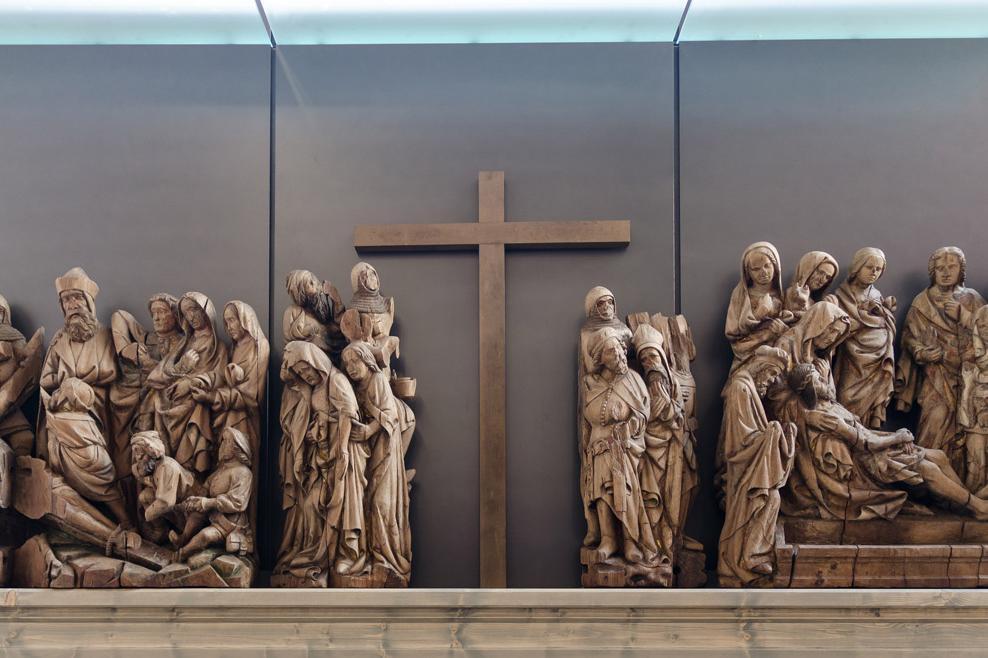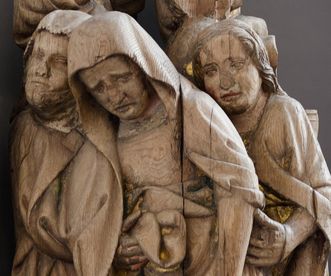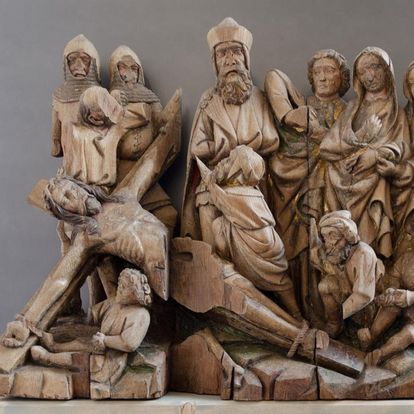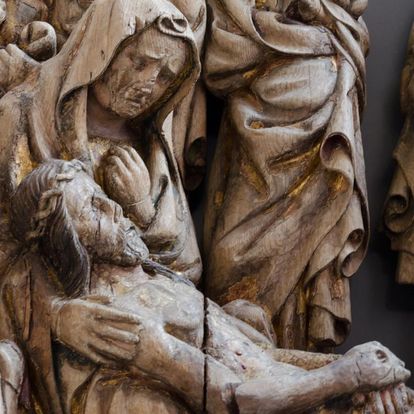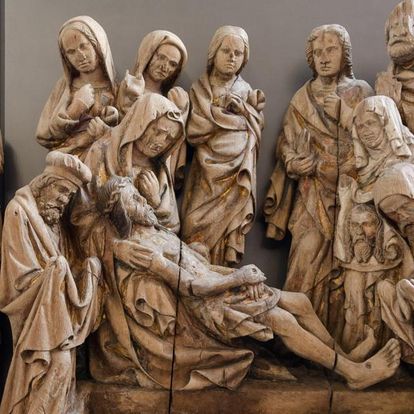MASTERPIECES OF SOUTHERN GERMAN WOOD CARVING
The reliefs are remnants of a partially painted or even fully carved high altar dedicated at the monastery in 1394. The altar must have appeared even more precious in an earlier age, when the reliefs were painted and gilded down to the faces on the individual figures. Traces of the gilding are still visible. The excellent wood carving work is attributed to a southern German workshop that worked on projects for the famous sculptor family, Parler.



